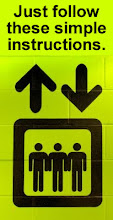Once you create a website for your business, you quickly figure out that people are not flocking to it. When you assess the different ways of driving traffic, your options include advertising your website address, promoting your website address through Public Relations and gaining media coverage, encouraging other sites to link to you and getting placed in online directories.
However, these marketing activities will deliver small and sporadic volumes of traffic. The single biggest thing you can do to drive traffic is search engine marketing. If you want to drive traffic to your site it is imperative that you get onto the first three pages of Google and the other top search engines.
Here are few ways through which you can get your site appear on the first page of Google search results.
In order to optimize your website to appear in natural search results, there are four components that you will need to address.
1.
Design: Many small businesses make the mistake of designing their website and then start thinking about driving traffic to it. The problem is that the way you design your site can result in your site being ignored by the search engine spiders, which means you will receive very little traffic. When designing your site, ensure you avoid the following pitfalls.
Flash: Sites are designed in HTML or flash codes. The spiders that are sent to your site by the search engines cannot read flash.
Frames: Some agencies design sites within frames. It makes designing the site easier as the only thing that changes from page to page is the content within the frame. However, spiders cannot read what is inside a frame so you will not get indexed and noticed by search engines.
Dynamic pages: Some sites are developed with a database which generates dynamic pages. Again, most but not all of the search engines can read dynamic pages.
Text within graphics: To ensure text is read uniformly by different browsers, design agencies often put text within a graphic. It looks great, however, a spider cannot read what text is in a graphic and simply moves on.
Keywords: At design stage, think about the keywords you want to be found by on search engines and incorporate that into your design.
2.
Content: Major areas to be stress upon are:
Keywords: Choosing the keywords that you want to appear in search results for is one of the most important things you can do. Invest time in choosing the keywords. Think about how you would search for your product or service. Once you have decided on your keywords, you need to place them throughout your site. The main areas are:
Web page title: This is what you see written in the title bar of the browser. This should explain what the purpose of your site or your page is and include keywords, but always in such a way that makes sense to a user who reads it.
Meta tags: The tags are not visible to users but they explain what the content of the page is. Keywords should be placed in here as they are easily searchable by spiders.
Homepage content: Your homepage is searched by the spiders and you should ensure that your keywords appear near the top header. They should also be sprinkled throughout the homepage.
Keyword density: Each page should have a minimum of 250 words; your keywords should account for 2 - 8% of the word on the page. That means they should appear between 4 and 16 times. To help you achieve both objectives you should focus on a couple of keywords for each page rather than a large number.
3.
Links:
Inbound links: your site might be designed in a way that is easily searchable by spiders and your content might be sprinkled with keywords, but you need to have other sites linking to you in order to achieve success. Ensure you know how many other websites are linking into your site and set a goal for increasing that figure. You can Post comments on forums or discussion groups with a link back to our site or Register your site with multiple directories in order to get links.
4.
Maintenance: Once you achieve a high ranking in the search engines, it is important to realize that you need to maintain your ranking. The criteria the search engines use in the algorithms constantly change and what works today may not work next week. Your site will need to be tweaked to bring you back up the rankings.
Effect of Outbound Links on Pagerank
-
As described in the pagerank algorithm, the distributed pagerank after
being divided by the number of outbound links on that page. So a page that
receives ...
14 years ago
















No comments:
Post a Comment